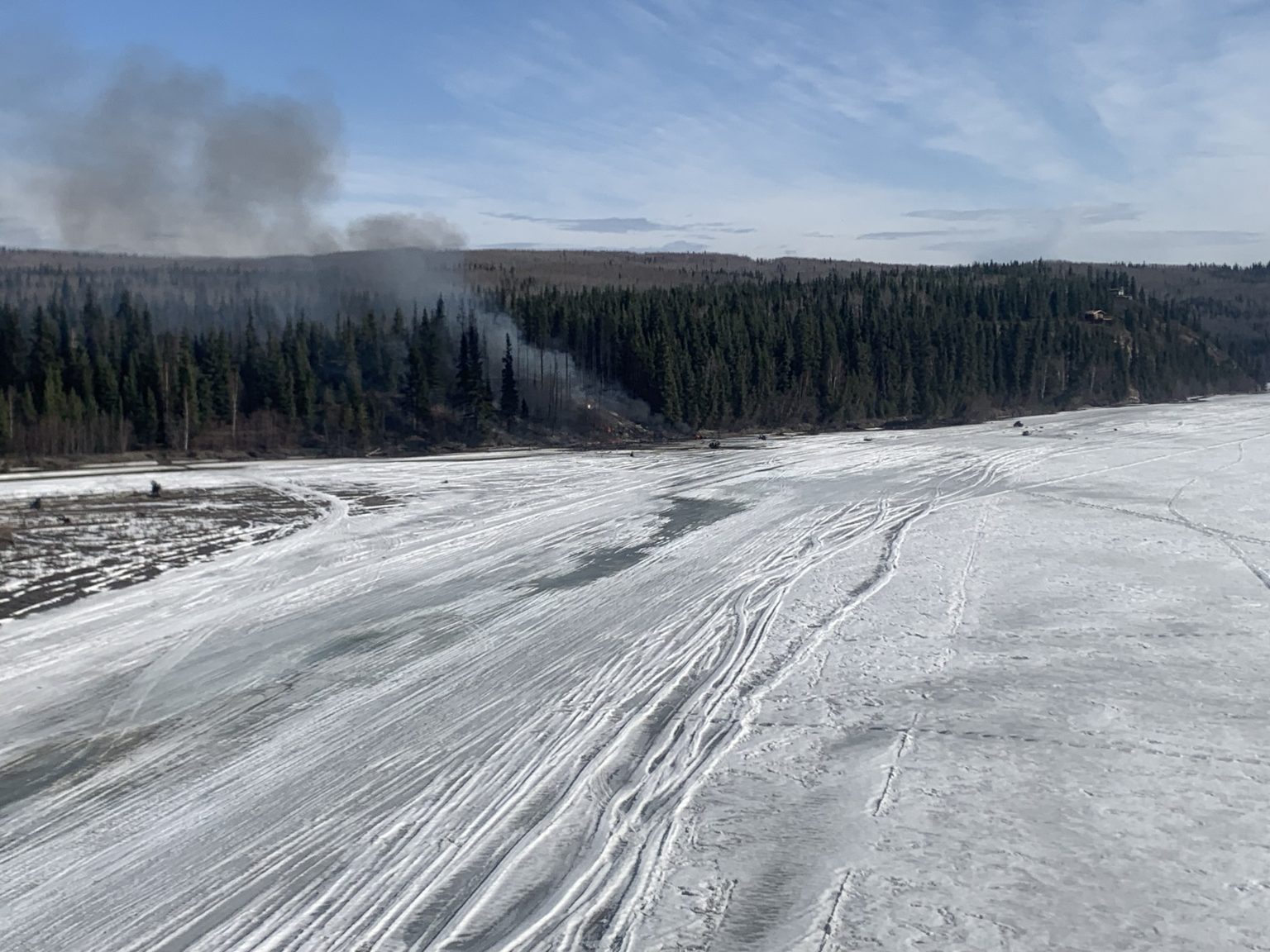On April 23, a Douglas DC-4 aircraft crashed into the Tanana River in central Alaska shortly after takeoff from Fairbanks International Airport. The plane burst into flames and slid into a steep hill on the riverbank, resulting in no survivors. Multiple agencies, including Alaska State Troopers, Alaska Wildlife Troopers, and various police and fire departments, responded to the scene. The crash site was located about seven miles south of the airport, and people were advised to stay away. The National Transportation Safety Board (NTSB) was called in to investigate the cause of the crash.
A video shared on social media captured the horrifying moment of the plane’s engine bursting into flames before crashing into the river. The footage, filmed by local farmer Mike Emers, showed the aircraft descending and disappearing behind trees. Emers described hearing a big explosion followed by subsequent explosions, with debris scattered up the hillside and the forest catching fire. Local reports indicated that there was “nothing left” at the crash site, highlighting the severity of the impact.
Clint Johnson, chief of the NTSB’s Alaska regional office, stated that it was unclear what caused the crash and what transpired between takeoff and the subsequent accident. The purpose and destination of the flight also remained unknown. The NTSB confirmed that investigators were en route to the scene to document the site, examine the aircraft, and determine the circumstances of the crash. The DC-4, a four-engine propeller aircraft from the 1930s, is still in use for commercial freight services, with around 80 in operation today.
The incident in Alaska added to the 1,200 plane crashes that occurred in the United States in 2021, according to data from the Bureau of Transportation Statistics. This translates to an average of 3 to 3.5 plane crashes per day in the country. The military variant of the DC-4, known as the C-54, played a crucial role during World War II for transporting aid. As investigations into the Fairbanks crash continue, authorities are working to determine the cause and prevent similar incidents in the future.
Overall, the crash in Alaska was a tragic event that resulted in the loss of two lives and drew attention to the challenges and risks associated with air travel. The NTSB’s investigation will shed light on what led to the disaster and provide insights to enhance aviation safety protocols. As advancements in technology and safety measures continue, the aviation industry aims to minimize accidents and ensure the well-being of passengers and crew members. Through cooperation among agencies and stakeholders, efforts are being made to prevent future tragedies and create a safer environment for air travel.















